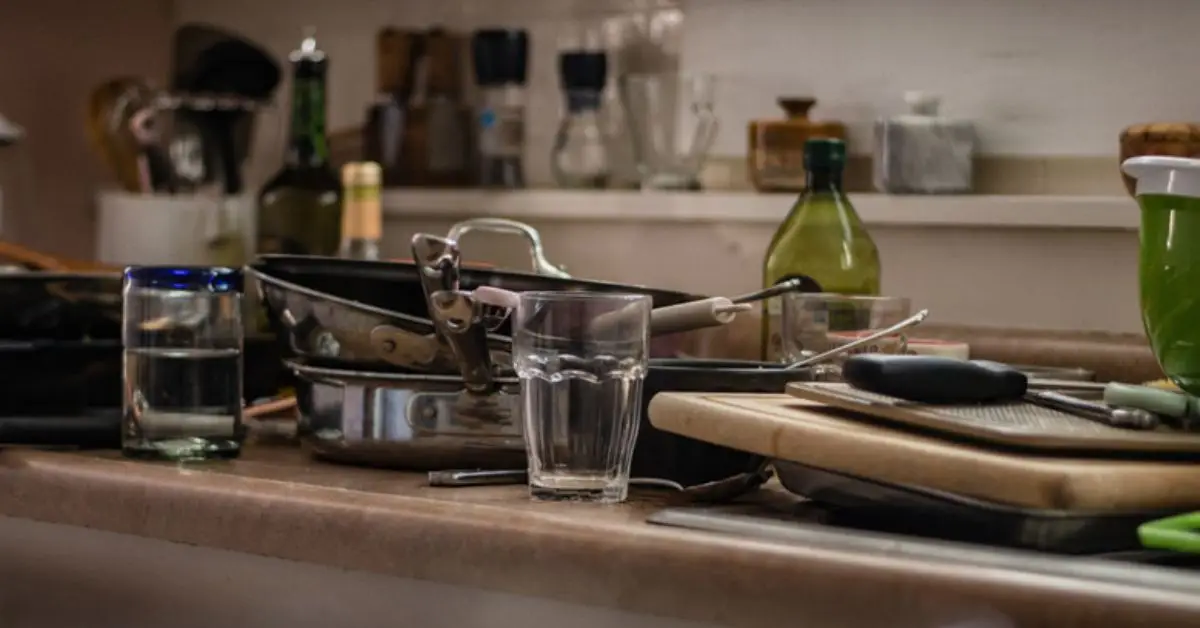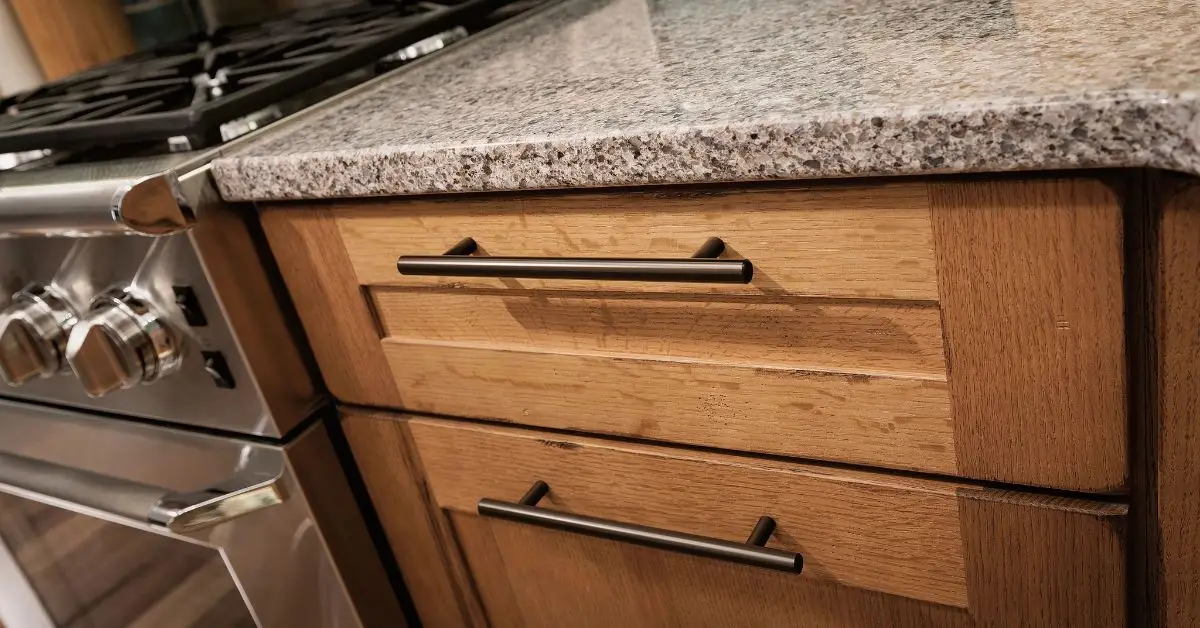6 Kitchen Details Guests Spot Immediately (But You Never Do)
The more time I spend in people’s homes, the more I notice one simple truth: guests pick up on things in your kitchen long before you think they do. I’m not talking about dramatic details. It’s the small, everyday signals — a faint smell, a cluttered counter, a sticky handle — that shape their first impression within seconds.
I’ve seen this over and over. You walk someone into your home, offer them water, and while you’re reaching for the glasses, they’re already scanning the sink, the stovetop, and anything that looks even a little out of place. They don’t do it to judge you. It’s automatic. Our brains are wired to read visual cues, scents, and cleanliness faster than we process conversation.
That’s exactly why I wanted to break down the common things people instantly notice in a kitchen — not to make you self-conscious, but to help you understand what actually matters. Some of these details are so simple that fixing them takes less than a minute, yet the impact on how your home feels is huge.
Before I dive in, I want you to think about the last time you walked into someone else’s kitchen. What stood out first? The counters? The smell? The dishes? That quick memory will tell you everything about how your own guests see your space, too.
If you’re ready, let’s look at the things people really notice — and what you can do about them.
1. Countertop Clutter: The First Thing Guests Scan

The funny thing about countertop clutter is that you stop noticing it, but guests see it the second they walk in. I’ve lived in homes where that one jar, that random mail stack, or that stray spice bottle became “invisible” to me — but it wasn’t invisible to anyone else.
When someone steps into your kitchen, their brain is scanning for open space. If the counters look busy, the whole room feels messy, even when everything else is spotless.
Why guests notice even tiny clutter instantly
- Their eyes naturally go to open surfaces.
- Clutter makes the space feel smaller and less fresh.
- Anything out of place looks exaggerated because it’s at eye level.
What homeowners stop seeing over time
- Permanent “parking spots” for items that should be inside cabinets.
- Small daily-use items (chargers, vitamins, seasoning jars) that blend into the background.
- A corner pile that keeps growing and feels normal to you but chaotic to guests.
Small clutter that signals “messy” even if the kitchen is clean
- Random mail or bills
- Half-used grocery bags
- Open snack packets
- Cleaning products left on the counter
- Appliances with crumbs around the base
- Utensils drying in a scattered way
Quick fixes
- Keep only one appliance visible (usually the coffee maker).
- Assign a small basket for daily quick-drop items.
- Wipe corners first — that’s where clutter collects.
- Clear everything before guests arrive, even if it takes one minute.
A clean countertop instantly tells your guests, “My space is cared for.” And honestly, it makes you feel lighter too.
2. Smells & Scent Cues Guests Notice Before Anything Else
You’d be surprised how quickly the nose forms an impression. I can walk into someone’s kitchen and tell if lunch was fried an hour ago, if the trash needs to be taken out, or if the fridge has something slightly “off.” The twist? You won’t smell your own home the same way because your nose adjusts to familiar scents.
Cooking odors, fridge smells, trash scent
- Lingering fried food or strong spices
- Sour smell from a fridge with old containers
- Trash that isn’t full yet but has a strong base odor
- Damp dish towels or sponges holding bacteria. Healthline has a good breakdown on how to get rid of skunk smell.
How smell affects “clean vs dirty” perception
- Guests associate bad smell with lack of hygiene, even if the kitchen is spotless.
- A pleasant scent makes the whole home feel more welcoming.
- Smell is tied to memory — one whiff sets the tone for the entire visit.
If you want a deeper look at the odors most people overlook, this guide on the home smells you can’t detect but your guests notice immediately breaks down where those hidden scents come from and how to eliminate them.
How to neutralize & add pleasant scents
- Empty trash even if it’s half full before guests come.
- Place a bowl of baking soda in the fridge to absorb odors.
- Heat a small pot with lemon slices and a bit of cinnamon for a fresh, warm scent.
- Wash or replace sponges and dishcloths regularly.
- Keep windows open for a few minutes to let natural air reset the space.
A fresh-smelling kitchen doesn’t just look clean — it feels clean. And your guests pick up on that without saying a word.
3. Sink, Dishes & High-Touch Areas Guests Judge Immediately

Whenever someone steps into my kitchen, I know their eyes go straight to the sink. Even if the counters are spotless, a few dishes or a tired-looking sponge instantly make the space feel less clean. The Spruce also points out that guests notice the sink because it visually reflects your overall cleaning habits — more than any other area.
Dirty dishes, wet sponges, cloudy sink
- Even one plate in the sink creates an “unfinished chore” feeling.
- Wet, soggy sponges look unhygienic, even if they were used minutes ago.
- A cloudy sink surface or leftover food bits send the wrong signal. Kitchens aren’t the only place where small hygiene cues matter; the same happens in bathrooms, and this guide on what to remove from your bathroom before guests arrive shows how quick changes improve first impressions instantly.
- The faucet handle shows grease, water marks, and fingerprints instantly.
Water stains around the faucet
Guests notice this before you do because the metal reflects light and highlights every smudge. Water deposits build up quietly, but they’re one of the first things people scan.
Scratched, old, or stained drying mats
- Drying mats fade and stain quickly.
- Even if they’re technically clean, they can look worn and neglected.
- Guests glance at the mat naturally while you’re reaching for something at the sink.
Quick fixes
- Rinse and wipe the sink after each use.
- Replace sponges often and hide the extras.
- Wipe around the faucet daily — it takes seconds.
- Swap drying mats before they start looking tired.
A clean sink makes the whole kitchen feel cared for. Once this area looks good, everything else follows.
4. Lighting That Reveals More Than You Think
Most homeowners don’t realize how quickly lighting exposes things they weren’t planning to show. Shadows make crumbs look bigger. Harsh bulbs make stains or scratches stand out.
Why homeowners miss lighting problems
- You get used to your own lighting after a while.
- You don’t see how dark corners look to someone entering for the first time.
- You rarely stand in the same spots or angles your guests do.
Bad shadows that highlight dirt or clutter
- Under-cabinet shadows make clean counters look dull.
- Overhead lights exaggerate smudges on stainless steel.
- Uneven lighting makes clutter look heavier than it really is.
Easy lighting upgrades that change perception instantly
- Switch to warm white LEDs — the space feels calmer and cleaner.
- Add an under-cabinet strip to brighten the workspace.
- Keep one soft accent light on (like over the sink) to make the kitchen feel welcoming.
- Clean light covers and fixtures — dust blocks more brightness than you think.
Good lighting doesn’t just brighten the room — it improves the mood, highlights cleanliness, and makes guests feel comfortable the moment they step in.
5. Cabinet Doors, Handles & Finishes Guests Notice Up Close

Whenever someone stands near my cabinets, I can almost see their eyes tracing the doors and handles. These touchpoints reveal more than you think. Even design experts say that the wrong or mismatched cabinet hardware is one of the biggest visual mistakes people make, which instantly throws off the look of the kitchen — something highlighted in a piece from Real Simple on common hardware errors.
Grimy handles
- Handles show fingerprints and food residue fast, especially in bright light.
- If the finish is cheap or overly shiny, smudges look even more obvious.
- Guests touch handles instinctively, so anything that feels sticky or greasy stands out.
Worn-out cabinet edges
- Corners chip and scratch over time, and guests notice them up close.
- Even a small worn spot makes the cabinet look older than it is.
- It quietly communicates “not maintained,” even if the rest of the kitchen is spotless.
Mismatched hardware
- Mixing random finishes or designs makes the kitchen feel unplanned.
- Designers warn that mismatching is one of the fastest ways to make cabinets look dated — something the Real Simple article also stresses.
- Guests sense the imbalance immediately, even if they can’t pinpoint why.
Quick cosmetic fixes
- Wipe handles with a microfiber cloth every few days.
- Upgrade to better-quality metal handles.
- Use furniture markers to touch up worn edges for a clean, fresh look.
- Pick one uniform finish so everything feels coordinated.
When cabinets feel polished up close, your whole kitchen reads as tidy and well-cared-for — something guests never miss.
6. Overall Visual Flow: What Looks “Off” to Guests
When I walk into someone’s kitchen for the first time, I often sense something that feels slightly “off,” even before I notice any clutter. Interior designers say this happens because the flow — how a kitchen is arranged and how people move through it — is one of the first things they evaluate.
Why homeowners become blind to flow issues
- You’re used to your own movement and stop noticing awkward corners.
- Familiarity hides layout friction — you overlook what your guests experience.
- You automatically “tune out” visual imbalances you see every day.
Items that look “out of place”
- Appliances sitting out with no logical home.
- Open shelves with too many random items.
- Chairs placed in walkways or blocking natural paths.
- Decorative pieces in areas meant for actual work.
Simple rearrangements that instantly make the space polished
- Move low-use appliances into cabinets to open the counters.
- Clear walk paths so guests don’t feel boxed in.
- Use baskets or containers to make shelves look intentional, not accidental.
- Revisit your sink-stove-fridge flow and adjust anything that disrupts it.
When the layout feels balanced and intuitive, your kitchen instantly appears calmer, cleaner, and more thoughtfully designed — the exact impression guests remember.
Quick Fix Checklist: 10-Minute Reset Before Guests Arrive

Whenever I know someone’s about to walk into my kitchen, I do a quick 10-minute reset. It’s simple, but it changes the entire feel of the space. These are the steps that make the biggest difference in the shortest time.
- Counter wipe — One fast sweep removes crumbs, fingerprints, and makes the room look fresh.
- Trash reset — Even if it’s not full, emptying it clears any hidden smells. If you want to take the reset one step further, here’s a helpful list of the most commonly forgotten places to clean before guests show up, which pairs perfectly with this quick kitchen routine.
- Switch/handle clean — Guests touch these without thinking, so a quick wipe creates a cleaner impression.
- Soft lighting on — Warm lighting instantly makes the kitchen feel more welcoming.
- Fresh scent — Lemon simmer, baking soda, or a neutral spray resets the air.
- Clear sink — No dishes, no wet sponges, no clutter — this alone changes everything.
- Fast declutter hack — Put loose items into a small basket and move it to a cabinet temporarily.
A clean look, clean air, and clean surfaces — that’s all guests really need to feel comfortable.
Why You Don’t Notice These Things Anymore (Kitchen Blindness)
I always remind people that you stop noticing your own kitchen for one reason: you live in it every day. Your brain gets so used to the same objects, the same pathways, the same smells, that it starts filtering things out.
Everyday exposure reduces perception
- When you see the same items daily, your mind stops registering them as “clutter.”
- Smells fade for you because your nose adapts.
- Visual mess blends into the background after a while.
Cognitive “home blindness”
There’s an actual psychological pattern at play — when your brain recognizes a familiar space, it switches to autopilot. That means anything small that looks off won’t even hit your awareness.
How to see your kitchen with “guest eyes”
- Step out, then re-enter your kitchen as if you’re walking into someone else’s home.
- Take a phone photo of the space — pictures reveal what your eyes miss.
- Stand where guests stand: near the island, at the entry, or close to the sink.
- Smell the space after being away for a few hours.
This shift alone helps you spot 90 percent of the things guests notice instantly.
Key Takeaways: What Guests Really Judge in the First 10 Seconds
When someone walks into your kitchen, they’re not evaluating everything. They judge the same core signals repeatedly — and almost all of them happen within the first ten seconds.
Top 6 signals
- Countertop clutter
- Smells
- Sink condition
- Lighting quality
- Cabinet condition
- Overall flow
Which ones matter the most
- Smell — it hits before visuals.
- Counters — the biggest focal point.
- Sink — the strongest hygiene cue.
Why these small details create the biggest impression
- They communicate how you maintain your home.
- They shape the emotional tone instantly.
- They influence whether your kitchen feels clean, cared-for, and inviting.
These signals don’t require deep cleaning — just awareness and smart habits.
I’d love to know — when you walk into someone else’s kitchen, what’s the first thing you notice? Drop your thoughts below. If you want more practical home-improvement guides, visit Build Like New for tips that actually make your space feel better, not just look better.
Disclaimer: This content is for general informational purposes only and reflects personal experience, design insights, and publicly available expert guidance. It’s not professional cleaning, safety, or renovation advice. Always follow product instructions and consult a qualified expert


